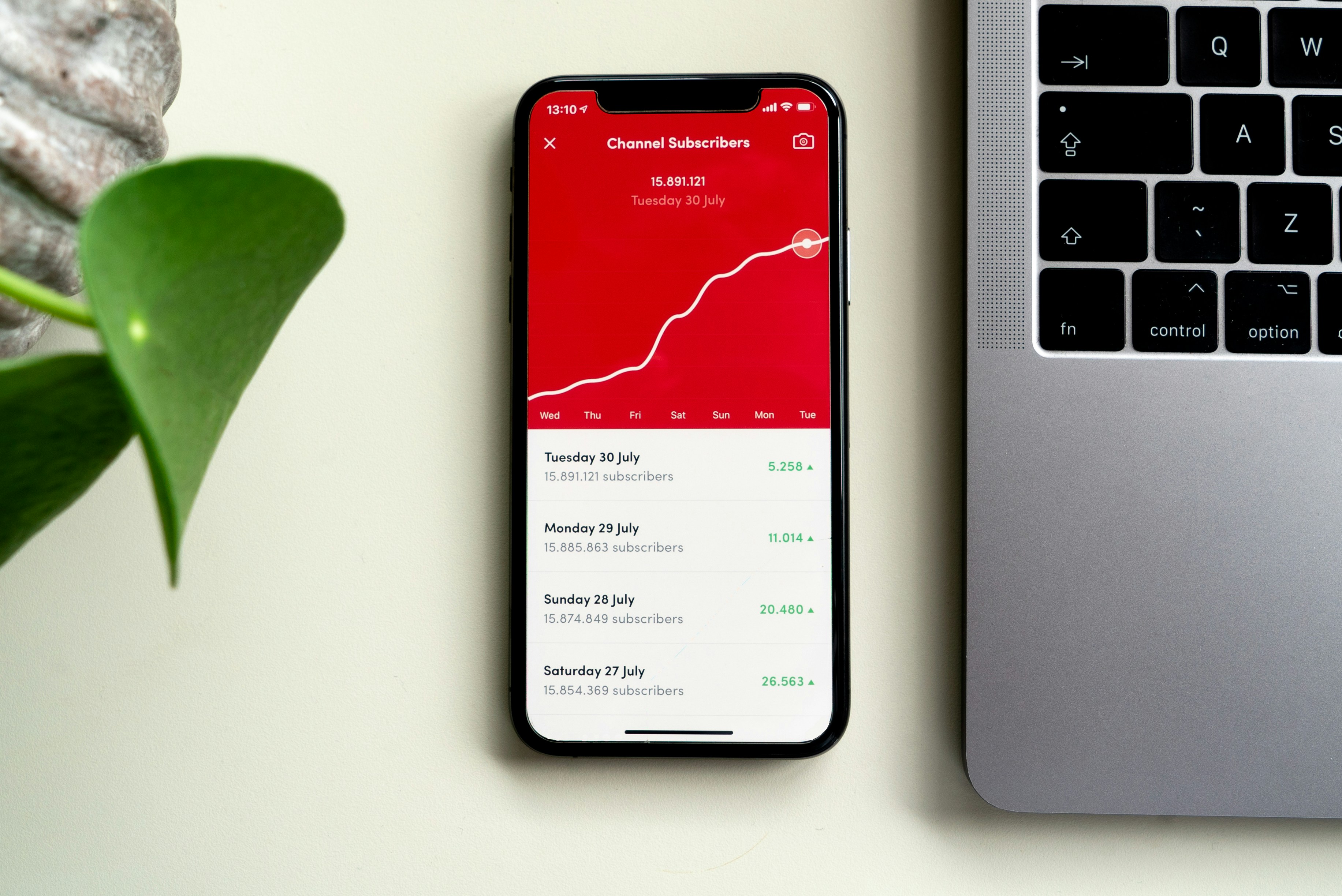
Effective Strategies to Boost Organic Website Traffic Without Paid Advertising
Understanding Organic Traffic
Organic traffic refers to visitors who arrive at a website through unpaid search results, as opposed to those who are directed via paid advertisements. Search engines, such as Google, use algorithms to rank websites based on their relevancy to user queries. The higher a website ranks, the more likely it is to attract organic visitors. This form of traffic is crucial for businesses aiming for sustainable online growth, as it fosters long-term visibility in search results.
One significant distinction between organic traffic and paid traffic lies in the intent of the visitors. Organic visitors are often actively seeking specific information, products, or services, making them more engaged and, consequently, likely to convert. In contrast, paid traffic often consists of users who may not have a genuine interest in a website’s offerings but click through due to attention-grabbing advertisements. As a result, organic visitors tend to exhibit higher conversion rates, leading to greater customer loyalty and retention.
Furthermore, organic traffic is beneficial in terms of cost-efficiency. While paid advertising can generate immediate results, it requires ongoing investment, and once the budget is depleted, traffic often declines sharply. In contrast, a website that invests in search engine optimization (SEO) and produces high-quality content can continue to attract organic traffic over time, even without continuous financial input. This makes organic traffic a valuable component of a website’s overall strategy, as it contributes to a stable revenue stream with increasing returns on investment as website authority grows.
In summary, understanding the significance of organic traffic is essential for any digital marketing strategy. By focusing on improving visibility through effective SEO practices, businesses can enjoy sustained growth and engagement from their audience without relying solely on paid advertising methods.
Content Is King: The Role of Quality Content
In today’s highly competitive digital landscape, high-quality content plays a pivotal role in attracting and retaining website visitors. By producing content that is not only informative but also engaging, websites can significantly enhance their visibility and drive organic traffic without resorting to paid advertising. Quality content serves multiple purposes: it educates readers, addresses their needs, and positions your brand as a credible authority in your niche.
To begin with, relevant content is essential for capturing the attention of your target audience. By understanding the interests and challenges faced by users in your industry, you can create content that resonates with them. This relevance not only helps in initiating conversations but also fosters trust, which is a fundamental component in converting visitors into loyal customers. Moreover, content that answers specific questions or solves common problems encourages visitors to spend more time on your site, thus contributing to improved search engine rankings.
Engagement is another crucial factor influenced by the quality of content. Well-crafted articles, blogs, or guides that incorporate storytelling, visual elements, and compelling headlines can significantly enhance user experience. Providing valuable insights through various formats—such as infographics, videos, or comprehensive guides—makes complex information more digestible, thereby increasing the likelihood of social sharing. The more users interact with the content, the higher the chances of improved organic traffic as search engines recognize content that keeps users engaged.
Ultimately, it is important to adopt a strategic approach to content creation. Regularly updating your content and aligning it with the latest trends and user interests is vital in maintaining relevance. By consistently producing valuable, high-quality content, you can cultivate a loyal audience base, elevate your brand’s online presence, and naturally boost organic traffic over time. This foundation not only supports immediate goals but also lays the groundwork for sustainable long-term success.
Utilizing SEO Techniques
Search Engine Optimization (SEO) plays a pivotal role in enhancing organic website traffic. Implementing effective SEO techniques can significantly improve visibility in search engine results pages (SERPs), helping websites attract more visitors without the need for paid advertising. This section will explore both basic and advanced SEO strategies that can be employed to optimize a website’s performance in search engines.
Firstly, keyword research is a fundamental aspect of SEO. Identifying the right keywords that your target audience is searching for is crucial. Tools like Google Keyword Planner, SEMrush, and Ahrefs can assist in finding relevant keywords with substantial search volume and lower competition. Proper integration of these keywords within web content, headers, and meta tags is essential for on-page optimization. This practice not only aids search engines in understanding the content but also enhances the user experience.
On-page optimization encompasses various techniques, such as optimizing images, enhancing page loading speed, and ensuring mobile-friendliness. A well-structured website that follows SEO best practices serves both users and search engines effectively. Implementing high-quality content that provides value to visitors can lead to an increase in dwell time, indirectly boosting rankings. Furthermore, internal linking strategies can help search engines understand the site’s structure and improve navigation for users.
Building backlinks is another advanced technique that can significantly impact organic traffic. Backlinks, or incoming links from other websites, signal to search engines that your site is reputable and authoritative. Strategies for acquiring backlinks include guest blogging, creating shareable infographics, or collaborating with influencers in your niche. Understanding and adapting to search engine algorithms is crucial, as they frequently evolve. Staying informed about these changes allows website owners to adjust their SEO strategies accordingly, ensuring sustained visibility and relevance in SERPs.
Leveraging Social Media Platforms

In the current digital landscape, leveraging social media platforms is essential for driving organic traffic to your website. The ability to share content virally across various channels can significantly enhance your online presence. To effectively use social media, begin by identifying the platforms where your target audience is most active. This could include popular networks such as Facebook, Twitter, Instagram, and LinkedIn, among others. Each platform offers unique opportunities for engagement, necessitating tailored content strategies.
Sharing relevant and valuable content is a cornerstone of attracting visitors through social media. High-quality posts that resonate with your audience can generate shares, likes, and comments, thus amplifying your reach. Utilize rich media formats such as images and videos, as these tend to perform better in terms of audience engagement. When crafting posts, include compelling headlines and clear calls to action that guide viewers back to your site. Scheduling tools can assist in optimizing post timing to coincide with peak user activity, further enhancing visibility and engagement.
Additionally, engaging directly with your audience is crucial for building a community around your brand. Responding to comments, participating in discussions, and acknowledging user-generated content are effective methods to foster loyalty. When followers feel recognized and valued, they are more likely to become advocates for your website. Running contests or live Q&A sessions can further stimulate interaction, encouraging followers to visit your site for more information.
Consistently monitoring social media analytics is key to understanding what resonates with your audience. By evaluating metrics such as engagement rates and traffic sources, you can refine your strategies to better meet the needs of your viewers. This analytical approach will help optimize your social media efforts, driving improved organic traffic to your website over time.
Building an Email List for Organic Growth
Establishing an email list is a crucial element in developing an effective marketing strategy that supports organic website traffic growth. By creating a dedicated mailing list, businesses can foster direct relationships with their audience, delivering valuable content that resonates with their subscribers. This form of engagement not only boosts brand loyalty but also encourages subscribers to return to the website, thereby enhancing organic traffic without relying on paid advertising.
To create a robust mailing list, several steps can be undertaken. First, it is essential to provide prospective subscribers with an incentive to join. This could be in the form of exclusive content, free resources, or discounts. The value offered should directly align with the interests of the audience and the goals of the business. Implementing sign-up forms across various touchpoints on the website, including landing pages and blog posts, can significantly enhance visibility and increase subscriptions.
Once a mailing list is established, the focus should shift to delivering valuable content through regular newsletters. This content should not only inform but also engage the audience. Sharing insights, tips, and industry updates helps position the business as a credible source of information, while also encouraging readers to share the content with their networks. When subscribers find the newsletters beneficial, they are more likely to revisit the website organically, especially to access referenced articles or additional resources.
In summary, building and nurturing an email list can lead to enhanced organic growth for a website. By sending high-quality newsletters that add value to subscribers, businesses can cultivate a loyal audience base, drive traffic to their site, and ultimately foster long-term growth. An email marketing strategy, therefore, serves as an integral part of boosting organic website traffic without the need for paid advertising.
Engaging and Building an Online Community
To enhance organic website traffic, establishing an engaged online community is essential. Interaction with readers through comments, forums, and social media creates a two-way relationship that fosters trust and encourages user loyalty. By actively responding to comments and feedback on your blog posts, authors can make readers feel valued, which is a crucial component in building a supportive online community. This practice not only encourages repeat visits but also increases the likelihood of users sharing content, further amplifying organic reach.
In addition to direct interaction on the blog, utilizing social media platforms as a tool for engagement is equally important. Social media allows for broader communication, where writers can share content and engage in conversations with followers. By consistently sharing valuable content and fostering discussions, authors can create an inviting atmosphere that motivates readers to return for new insights. Regularly participating in discussions related to your niche on various platforms can also enhance visibility and position you as an authority, thereby attracting a wider audience.
Forums and online communities are platforms where like-minded individuals gather to share their interests. Engaging in such spaces can be a powerful strategy for building a community. Offering advice, answering questions, and contributing valuable insights in these forums can establish credibility and encourage participants to visit your website. When users feel personally connected to a brand or an author, they are more likely to return, engage, and share the content within their networks.
Ultimately, the key to success lies in nurturing relationships with your audience. By creating a thriving community around your content, you can significantly boost organic traffic while cultivating an environment where users feel appreciated and connected. Through genuine engagement and interaction, it’s possible to foster a loyal readership that will contribute to your website’s growth.
Analyzing and Optimizing Performance

One of the fundamental steps in enhancing organic website traffic is the thorough analysis and optimization of website performance. This process begins with the implementation of analytics tools, the most prominent being Google Analytics. By using Google Analytics, website owners can access a wealth of information regarding user behavior, traffic sources, and content performance, providing valuable insights into what influences organic growth.
Understanding user behavior is crucial; it helps identify how visitors interact with your website. For instance, metrics such as bounce rate, average session duration, and pages per session can reveal whether users find your content engaging or if it needs improvement. Analyzing these behaviors enables you to make informed decisions about content updates and user experience enhancements. Moreover, understanding traffic sources—whether visitors arrive from search engines, social media, or referential links—allows you to tailor your organic growth strategies accordingly. For example, if a significant portion of traffic is derived from social media, investing time in organic social strategies may yield positive results.
Additionally, identifying which content performs best is vital for optimizing future strategies. By examining metrics like page views, time on page, and shares, you can discern which topics resonate most with your audience. This analysis assists in content planning, allowing you to refine existing articles or develop new ones that align with user interests and search intent. Regularly reviewing performance data not only aids in increasing organic traffic but also plays a crucial role in adapting to changing trends and user preferences.
Ultimately, leveraging analytics tools effectively serves as a cornerstone for boosting organic website traffic, enabling continuous improvement and strategic optimization based on user insights and engagement patterns.
Consistency and Patience: The Road to Organic Success
Achieving significant organic website traffic is not an overnight accomplishment; instead, it is a gradual process that demands consistent efforts and a great deal of patience. Many may become disheartened upon realizing that the fruits of their labor—whether in content marketing, SEO optimization, or audience engagement—are not immediately evident. However, it is essential to understand that organic traffic growth often follows a nonlinear path, marked by milestones that require sustained diligence to attain.
Consistency in content creation plays a pivotal role in building organic traffic. Regularly publishing high-quality, relevant content not only attracts visitors but also keeps them returning for more. This can involve creating blog posts, infographics, videos, or podcasts that resonate with your target audience. Moreover, consistent content helps in establishing authority and credibility within your niche, which is essential for long-term organic success. Search engines also favor websites that update content frequently, as it signals relevance and activity.
Furthermore, patience is integral to understanding the timeline of organic growth. Unlike paid advertising that can yield immediate results, organic traffic builds momentum over time. Factors such as search engine algorithms, user behavior, and competition all play a part in how quickly traffic accumulates. Therefore, it is crucial to maintain a long-term perspective and remain committed to your strategy without losing momentum. Establishing a routine for content updates and audience interaction can help in nurturing the relationship with your audience and enhancing your organic traffic potential.
In summary, cultivating organic traffic necessitates consistent content creation and unwavering patience. Embracing this journey requires the acknowledgment that success is often a slow burn, but the long-term payoff—an engaged audience and increased visibility—makes the effort worthwhile.
Job Requirements for Growing Organic Traffic

In the landscape of digital marketing, understanding the job requirements for enhancing organic website traffic is crucial for success. Various skills are necessary for individuals focusing on this aspect, as each contributes significantly to the overall strategy. Below, a mini table highlights essential skills and requirements for those aiming to grow organic traffic effectively.
| Skill | Description |
|---|---|
| Content Writing | Strong content writing skills are imperative for creating engaging, high-quality articles, blog posts, and other forms of content. This not only helps in retaining visitors but also enhances search engine rankings. |
| SEO Knowledge | An in-depth understanding of Search Engine Optimization (SEO) is essential. This includes familiarity with keyword research, on-page SEO tactics, and link-building strategies to improve organic reach. |
| Social Media Proficiency | Proficiency in social media platforms is necessary for outreach and engagement. Leveraging these channels to distribute content can significantly amplify organic traffic and build a loyal audience. |
| Analytical Skills | Strong analytical skills enable individuals to assess and interpret data effectively. Understanding traffic sources, user behavior, and conversion rates allows for adjustments in strategy that enhance organic traffic growth. |
By mastering these skills, individuals can position themselves favorably within the realm of digital marketing. Commitment to continuous learning in these areas will ultimately contribute to a successful organic traffic strategy, complementing the broader objectives of the website. Each of these competencies forms a foundational component for anyone aiming to excel in driving organic traffic without reliance on paid advertising.







